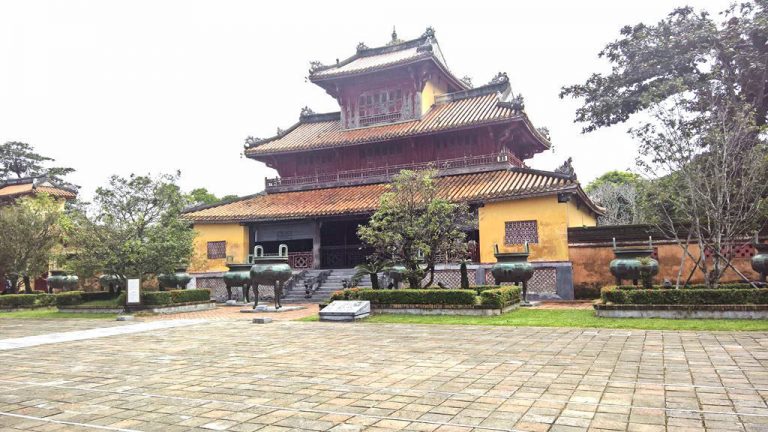Hue – a peaceful city full of historical sites
Hue was part of the Champa kingdom until 1306 and was the national capital from 1802 to 1945. Today, Hue is the capital of Thua Thien Hue province and is located 654km south of Hanoi and 1079km north of Ho Chi Minh City. Due to its history and position, Hue remains the heart of education, culture and tourism in central Vietnam.
Hue has a tropical climate prone to monsoons. The dry season lasts from March to August, with temperatures between 35 – 40 oC. The rainy season starts in August and ends in January with flood season beginning in October. The average rainy season temperature is 20 oC.
Hue is well known for its historic monuments. In 1993, Hue was recognized as a World Heritage Site. In 2003, Hue Royal Music was honored and recognized as a World Cultural Heritage.
Places of Interest
Hue Imperial City
Completed in 1832, the Citadel is a square enclosure. It was built in an auspicious location chosen to preserve the harmony between the king and his subjects, between heaven and earth, and between man and nature. It took more than 30 years to build with tens of thousands of people working on the complex. There are three concentric areas: the City, the Imperial City, and the Forbidden City.
The Imperial City was a very important place where the king, his family, and the highest mandarins worked and lived. It is nearly square, more than 600m long for each side. Imperial City has 4 entrances. The main entrance, Ngo Mon, was built in 1833. The upper level, called Lau Ngu Phung, is where the king appeared on important occasions. It was here the last king, Bao Dai abdicated in 1945 when he handed over his symbols of power to the new government.
The Forbidden City was built in 1804 and reserved for kings and their families. The front and the rear sides of Forbidden City are 423 m long, left and right sides are 290 m long. The Forbidden City was connected to the Imperial City by seven gates.
Thien Mu Pagoda
Built on the bank of the beautiful Perfume River, Thien Mu is the most famous pagoda in Hue. It was first built in 1601 and was originally a thatch-roofed shrine made by Lord Nguyen Hoang. Since then, it has undergone many restorations. Artifacts preserved there include a brass gong (cast in 1677), a 2 ton bell (cast in 1710), and Phuoc Duyen Tower (built in 1844). The architecture, location and historical role of Thien Mu place it among the most attractive sites to visit in Hue.
Minh Mang Mausoleum
The Mausoleum is the burial place of Minh Mang, the second king under the Nguyen dynasty, and now acts as a place of worship. The son of Kind Gia Long, he reigned for 21 years from 1820 to 1841, when he died. He was known for his opposition to the involvement of the French and he completed the Hue Citadel after Gia Long died.
Minh Mang Mausoleum is in Huong Tho village, 12 km from the center of Hue. Completed in 1843, the Mausoleum is a complex including palaces, temples, and pavilions. Its architecture is based on traditional designs that represent harmony between man and nature.
Khai Dinh Mausoleum
Khai Dinh Mausoleum is situated on the face of Chau Chu Mountain. It was completed in 1921 and boasts a unique mixture of Western and Eastern style architecture. Though much smaller than preceding mausoleums, Khai Dinh is far more elaborately designed.
Reference: Hue city excursion in 1 day



Comments